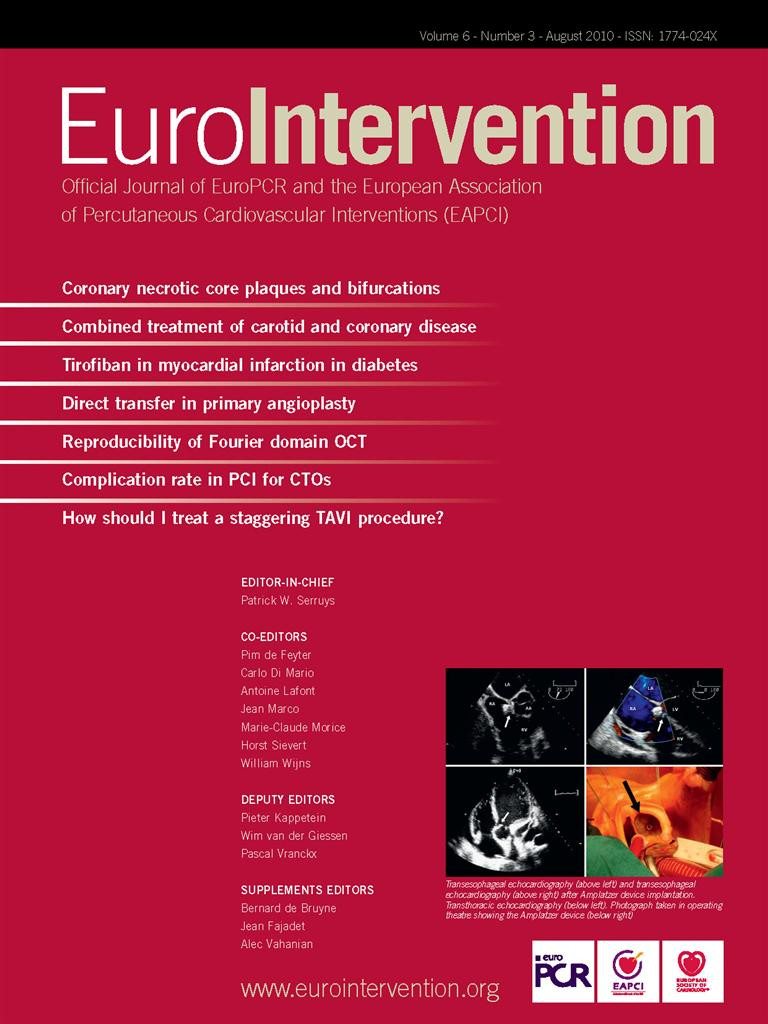Dear colleagues,
In reflecting on our latest issue, this month published at the time of the annual European Society of Cardiology annual meeting, we cannot help but appreciate the immense effort that goes into creating – not only our journal, EuroIntervention and the ESC meeting itself – but the collaborative effort in the day-to-day practice of our profession, drawing, as it does, not only from our own speciality, but from other fields and specialities as well.
In the last few months we have focused on new imaging technologies, but we could have focused just as well on other specific aspects of our profession, such as the work taken on since several years by the aptly named European Bifurcation club, or the ongoing and ground-breaking work in TAVI as well as many other subjects. There are entire teams that surrounds us, from technicians and cathlab nurses to hospital staff... at every level invoking the very essence of a collaborative work.
Extending knowledge
Soon you will see another example of what can only be called, in a broad sense, team-work across all European, and even international boundaries. The EAPCI, our affiliated organisation, for which we are the official publication, has just given their endorsement to two new books especially rolled out under the auspices of PCR publishing.
The first, edited by Manel Sabaté, is entitled “Percutaneous Cardiac Interventions: Tips and tricks of new techniques beyond stenting” addressing the issue of the rapid advances in our field, and the subsequent learning curve that plagues us as we incorporate new techniques into our practice for the benefit of ourselves, and of course, our patients. This book integrates the pedagogical lessons learned from years of teaching and experience with the EuroPCR course: “hands-on” advice, the “tips and tricks” cited in the title of the book, for better understanding – as well as acquiring – these new methods for use in simple, as well as complex, cases. The book is divided into three parts: “diagnostic procedures”, “therapeutic procedures, and “new developments”. Its authors, drawn from throughout Europe and the world include: Paul Schoenhagen, Masahisa Yamane and Etsuo Tsuchikane, Thomas Walther, Dariusz Dudek, Alec Vahanian, Laura Mauri, Bernard Meier and Philipp Bonhoeffer as well as dozens more.
While for this first book I wrote the introduction, the second I co-edited with Javier Escaned (this time with an introduction by Morton J. Kern) on “Coronary Stenosis: imaging, structure and physiology”. While practical in the sense of the first, this book also delves into the very structure and science of the question, with chapters written by leading experts, the likes of Robert H. Anderson, Tony Hlavacek, Rob Krams, Renu Virmani, Amir Lerman, Carlo Di Mario, Fernando Alfonso, Pim de Feyter and John Ambrose among others. This book is divided into six parts: haemodynamics of coronary stenosis, structure of coronary stenosis, invasive and non-invasive imaging of coronary stenosis, invasive and non-invasive functional assessment of coronary stenosis, dynamic coronary stenosis and iatrogenic stenoses after cardiac interventions.
It goes without question that a collaborative effort of the kind represented by these books is essential to the advancement of our work and we highly recommend both.
As it should be
By the time you read this, the summer will be drawing to a close. We all know how fast time passes, how rapidly our field progresses, how quickly the calm of the summer months turns to the stress of our daily practice, and the demand by our patients and ourselves, as well as increasingly by the society-at-large, to offer the best possible care... efficiently, cost-effectively, yes, but with humanity.
These challenges, as we have often said, though taken on an individual basis, can only really be faced when we work together, as a group, collaborating across our own sub-speciality, but further, across the field of cardiology in general, medicine as a whole, and involving all players and all continents in our pursuit of excellence.
As always, we invite to join us in this endeavour.

